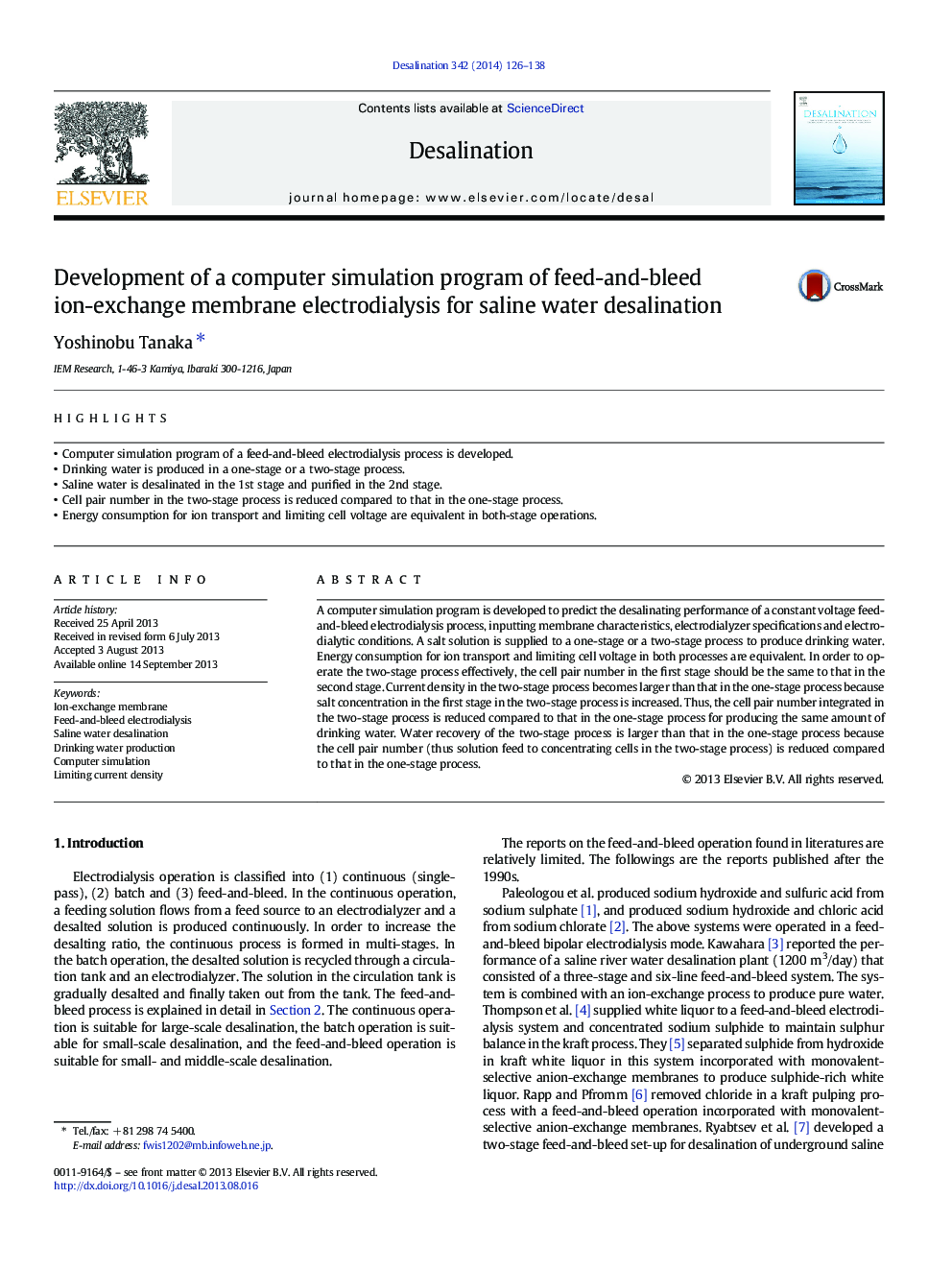| Article ID | Journal | Published Year | Pages | File Type |
|---|---|---|---|---|
| 623633 | Desalination | 2014 | 13 Pages |
•Computer simulation program of a feed-and-bleed electrodialysis process is developed.•Drinking water is produced in a one-stage or a two-stage process.•Saline water is desalinated in the 1st stage and purified in the 2nd stage.•Cell pair number in the two-stage process is reduced compared to that in the one-stage process.•Energy consumption for ion transport and limiting cell voltage are equivalent in both-stage operations.
A computer simulation program is developed to predict the desalinating performance of a constant voltage feed-and-bleed electrodialysis process, inputting membrane characteristics, electrodialyzer specifications and electrodialytic conditions. A salt solution is supplied to a one-stage or a two-stage process to produce drinking water. Energy consumption for ion transport and limiting cell voltage in both processes are equivalent. In order to operate the two-stage process effectively, the cell pair number in the first stage should be the same to that in the second stage. Current density in the two-stage process becomes larger than that in the one-stage process because salt concentration in the first stage in the two-stage process is increased. Thus, the cell pair number integrated in the two-stage process is reduced compared to that in the one-stage process for producing the same amount of drinking water. Water recovery of the two-stage process is larger than that in the one-stage process because the cell pair number (thus solution feed to concentrating cells in the two-stage process) is reduced compared to that in the one-stage process.
